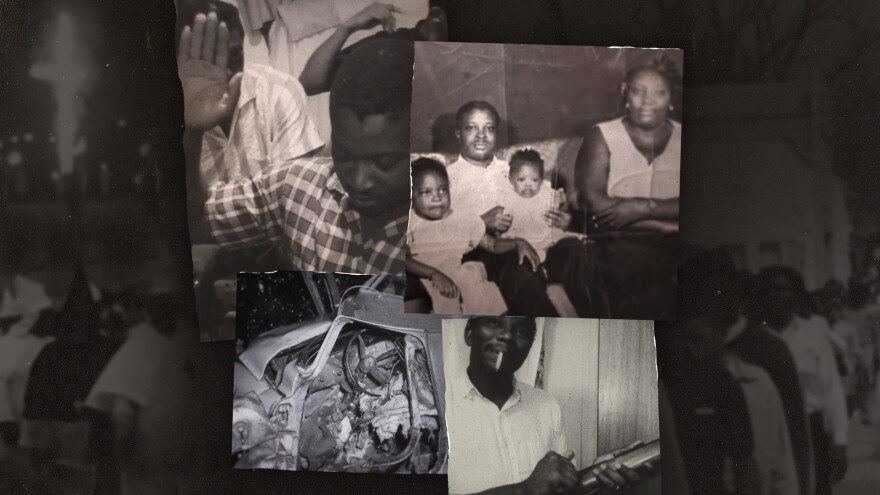In 1967, Wharlest Jackson Sr. was killed by a bomb planted in his truck. Jackson was an NAACP leader in Natchez, Mississippi — a town known for Ku Klux Klan activity.
His murder remains unsolved to this day. A new documentary, American Reckoning, explores how the events surrounding his death unfolded. Co-directors and co-producers Brad Lichtenstein and Yoruba Richen use rare archival footage from the 1960s to highlight the civil rights movement and Black resistance happening in Natchez.
They both share more about the process of making the film and how they discovered the lost history.
Lichtenstein starts by explaining that the idea for American Reckoning dates back to 2014, when he became lifelong friends with Congressman John Lewis.
Standing in Lewis's office, Lichtenstein recounts how the congressman's secretary pointed him to the cases that were to be reexamined by the Emmett Till Act. The cases where used in a film called Black Natchez.
"A few phone calls after that, I discovered that there was all this footage that had been shot, and not used in the film, but they were outtakes and that they actually included a lot of the story of Wharlest Jackson Sr. So that's kind of how we landed in Natchez and [his story]," says Lichtenstein.
Liechtenstein met his filming partner, Richen, at the Sundance Film Festival where the two struck up a conversation about upcoming projects. There, he pitched the idea of American Reckoning to Richen, who sealed the deal to work on the film when she realized the Deacons for Defense and Justice were a part of the story.
"Brad told me about American Reckoning and I was immediately intrigued because of the story. Then he sent me the first trailer that he did, which was so powerful. I saw this incredible archive footage that I'd never seen before," says Richen.
The film used included mass boycotts that took place in downtown Natchez. Boycotts were central in making sure demands were met about access to education, access to public amenities and putting Black police officers onto the force.
While the Deacons for Defense and Justice were not the organizers of the many boycotts that happened, they did enforce it, explains Lichtenstein. "They made sure that Black people did not break the boycott, and the white business structure power structure crumbled in a very short time period. It's because of that strict discipline around the boycott that changes were made, and they became a model for other boycotts around Mississippi," says Richen.

Every documentary requires a deep sense of trust, Lichtenstein says, and this documentary was no different. First Lichtenstein met with Jackson Jr. at a local park and after he gained the family's trust Lichtenstein was able to meet Jackson Jr.'s sister Denise.
Richen says to be trusted with a story like this comes with great responsibility. It struck her, she notes, just how much Jackson Sr. tried to hide the violent part of his life from his family. She explains Jackson Sr. never talked about what was happening and that aspect of life is something many Black families are familiar with because it was so dangerous.
Richen predicts the film will force us to question what exactly is justice. She points out that, since the film has been created, many have held conversations around reparations.
"Some may want money, some may want services, some may want an honor — a museum built in their honor. I mean, there are many different ways that reparations should be understood. And I think that this film, you know, we end with that — we leave with that,"says Richen.
The film also depicts how people are coping with trauma says Lichtenstein. Movies like American Reckoning are especially important right now as the country is having a larger discussion around how race should be taught in schools Richen adds.
"Not only is it about not repeating history and learning from it, but it's also understanding as human beings, what we have gone through. This is American history. It's not just African American history," says Richen.







